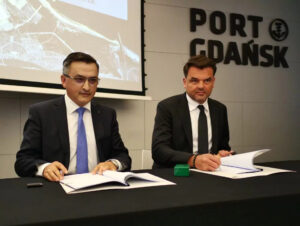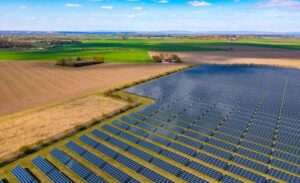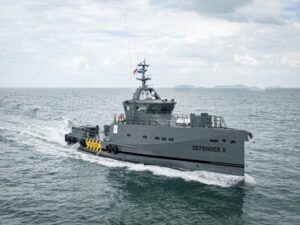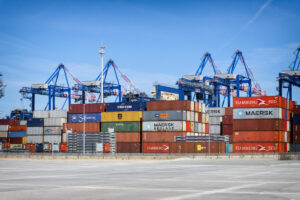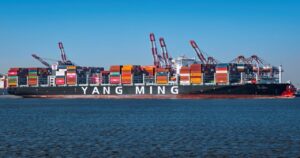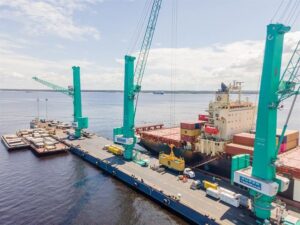Compared to the first three quarters of 2015 (+5.4%), cargo throughput at the Port of Rotterdam in the same period this year fell by 1.9%. The decrease was particularly strong in coal and iron ore.
Allard Castelein, CEO of the Port of Rotterdam Authority said: “Each of the different sectors in the port has its own dynamic. The 1.9% decrease is consequently the sum of a number of different developments. In 2016 as a whole, we hope to get near the total throughput achieved in the record year 2015,
“Throughput figures only tell part of the story. For example, companies in the offshore sector are currently under pressure, and a number of businesses in the region recently announced large-scale layoffs.”
Throughput in liquid bulk fell by 0.4%, to 160.0 million tonnes. The volume of crude oil handled in the port saw a 1.6% decrease. While the refineries’ margins are still positive, they are smaller than last year. The throughput of mineral oil products is virtually unaltered: +0.2%. While the port handled a lower volume of Russian fuel oil, it did put through more diesel fuel, naphtha, kerosene and gasoline. Nine months into the year, the volume of LNG put through Rotterdam is 23.9% lower than the level recorded in 2015. The decrease in this segment can mainly be attributed to poorer conditions in the re-export market. Other liquid bulk saw a combined increase of 3.6%.
The volume of dry bulk handled in the port fell by 7.8%, to 60.3 million tonnes. Iron ore and scrap metal decreased by 8.5%. This is primarily due to growing pressure on the German steel industry due to the dumping of Chinese steel. The blast furnaces of Dillingen and Voest Alpine were temporarily put out of operation for maintenance. Coal throughput fell by 10.3% – mainly as a result of the growth in the wind and solar power segments, reduction in stocks and a temporary halt of operations at a number of coal-fired plants. The trend in Rotterdam is in line with expectations and with a similar decrease in neighbouring ports. In the Hamburg-Le Havre range, throughput in the first six months of 2016 fell by nearly 15%. The volume of agribulk handled in the port decreased by 1.5%. Other dry bulk was 4.7% lower than last year – mainly due to reduced demand from the metal and steel processing industries.
Compared to last year, throughput of containers decreased by 0.4% in TEU (cargo capacity unit), and 1.2% in weight. All in all, some 9.3 million TEU was handled in the port, or 94.8 million tonnes. While the port saw a lower container throughput than last year in the first five months of 2016, it was able to record higher volumes from June on. This positive trend is expected to continue in the final quarter, thanks among other things to the sailing schedules adopted by the new shipping alliances – which are favourable for Rotterdam – and the further development of the terminals at Maasvlakte 2. The suspension of payments by the shipping company Hanjin led to an estimated loss of 30,000 TEU for the port of Rotterdam. Other shipping lines are expected to take over the clients formerly served by Hanjin, meaning that this is a temporary effect. As yet, the impact of Brexit is not yet felt in ro/ro volumes (ferries to the UK): the volume in this segment increased by 1.1%. A number of ferry operators have announced they will be expanding their services – both to the UK and to Portugal and Spain. While the throughput in other breakbulk fell by 2.0%, in September, this segment showed a substantial increase thanks to, among other developments, the increased volume of steel (billets) and monopiles for the offshore wind farms in the North Sea.


